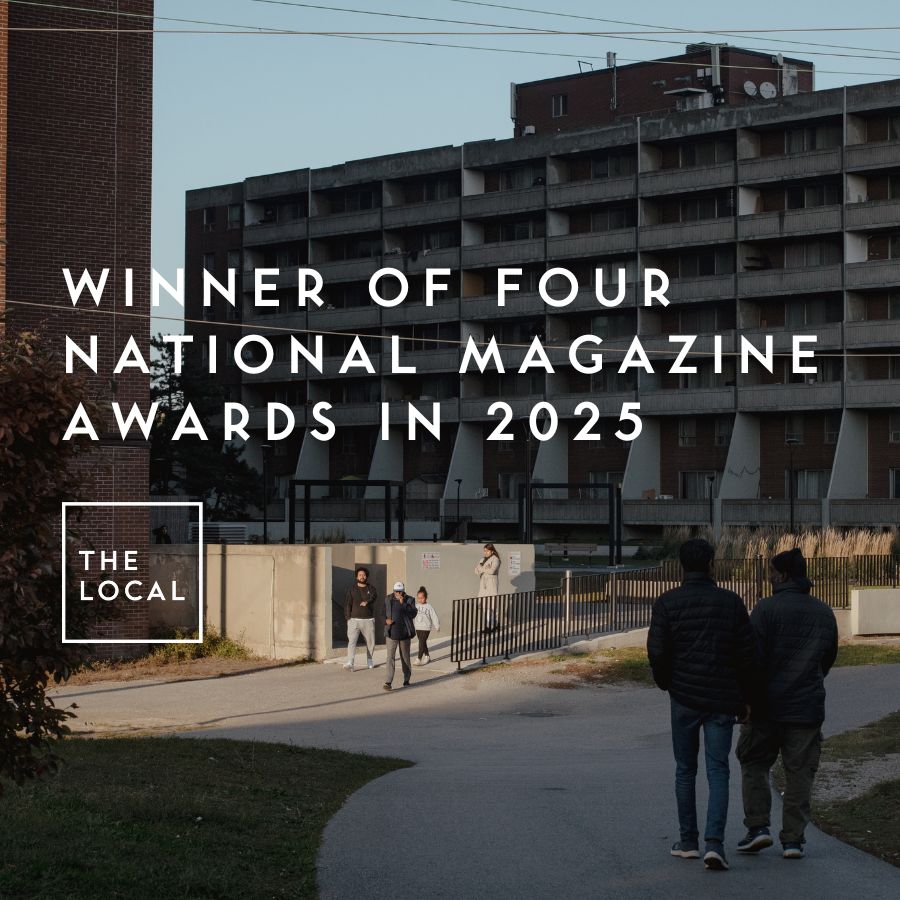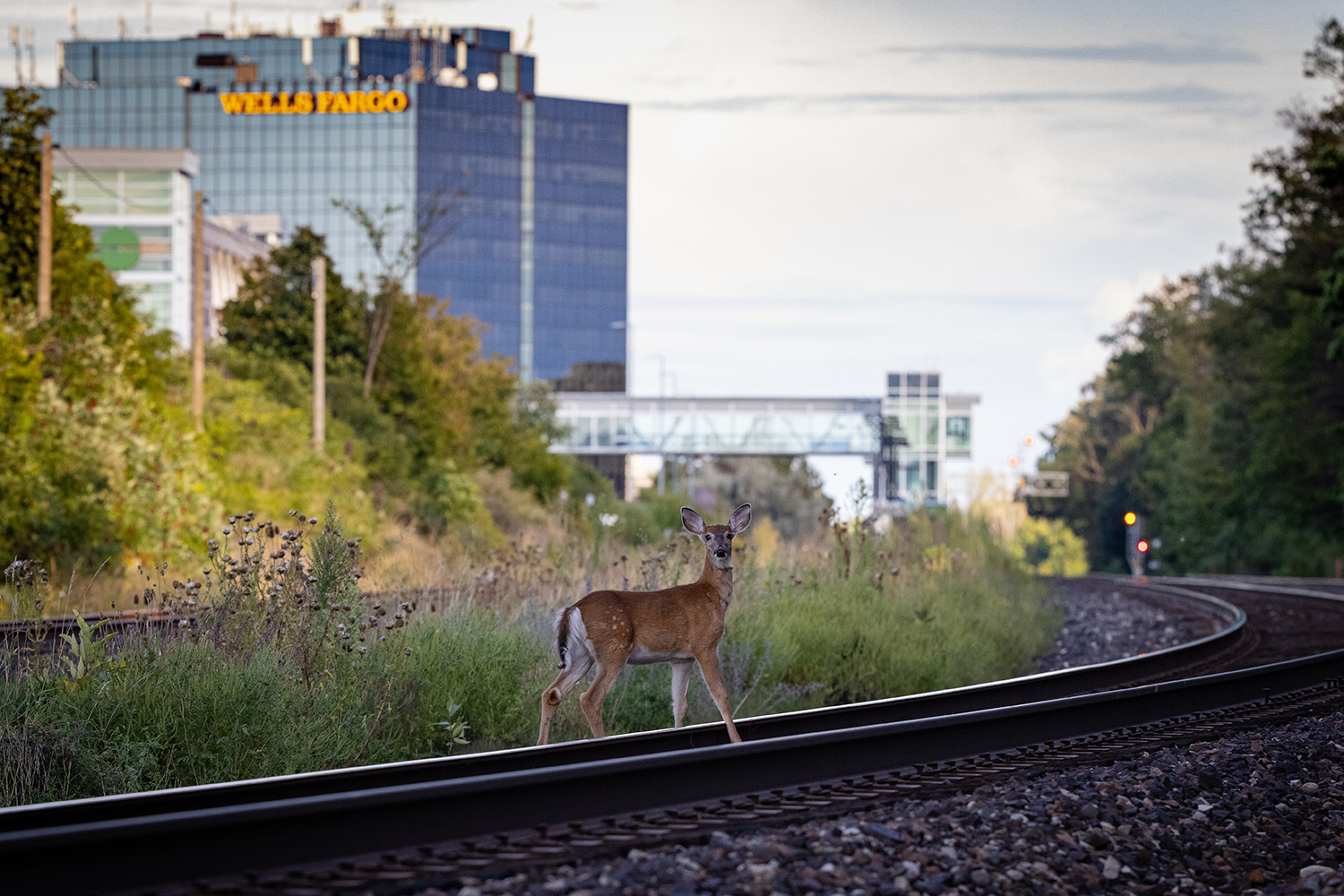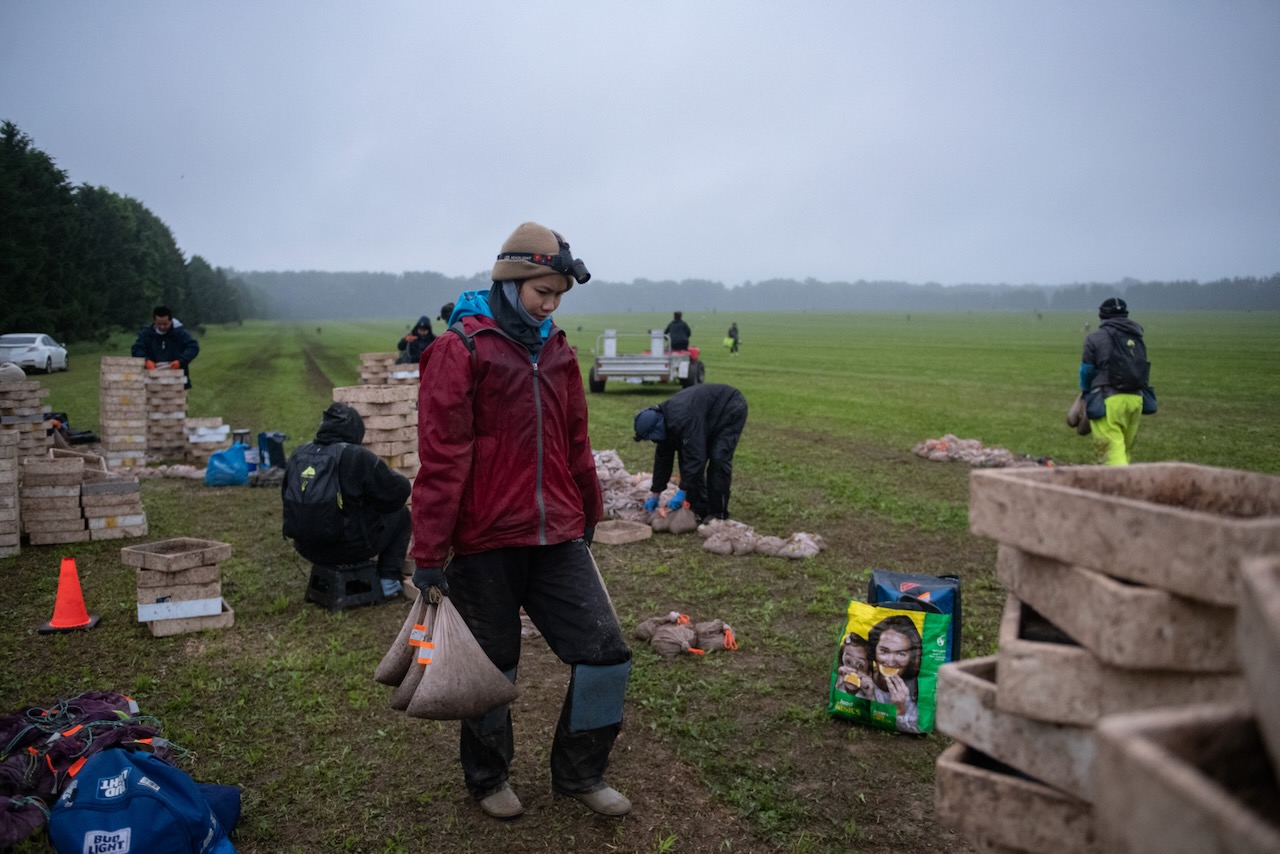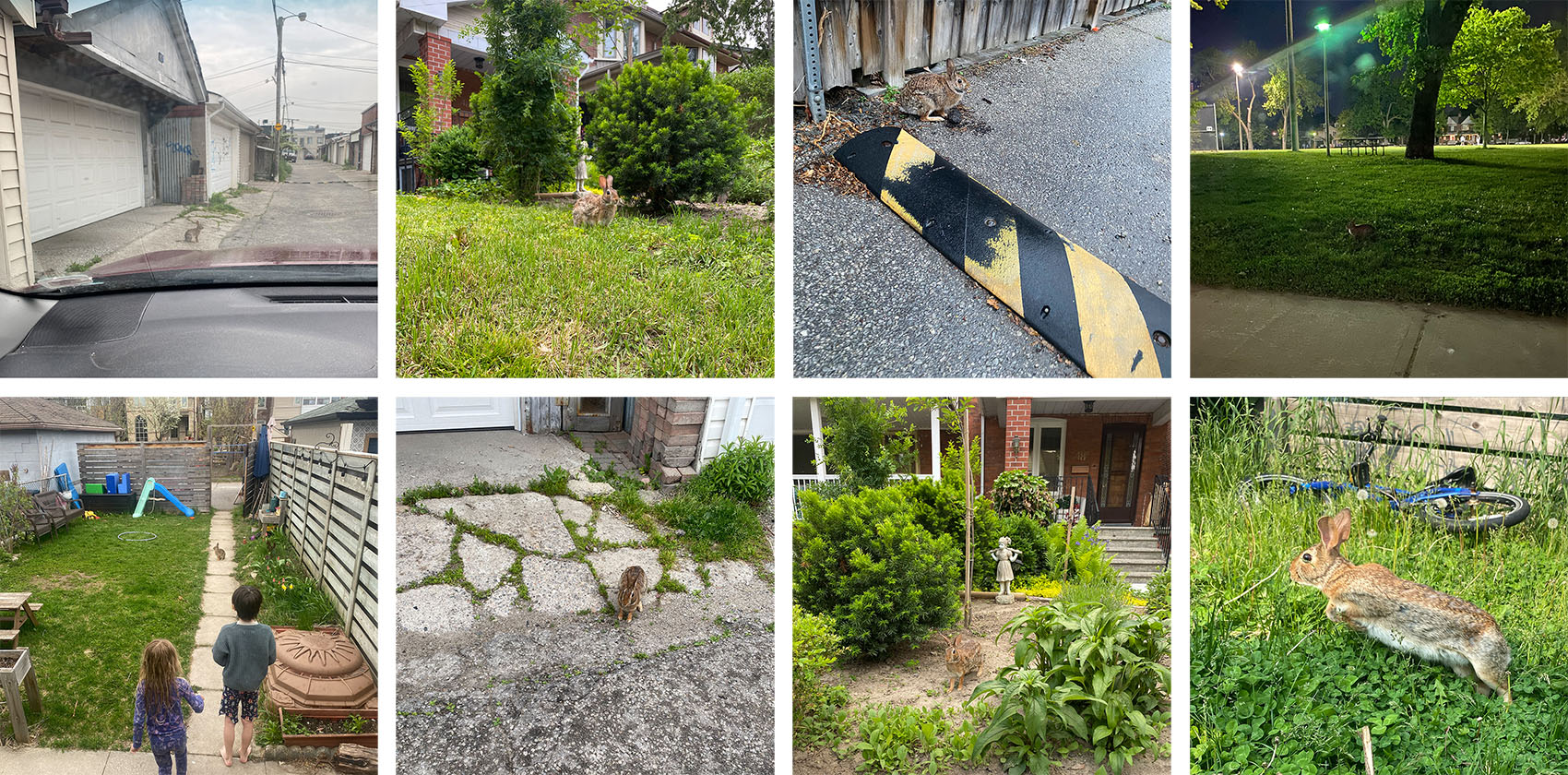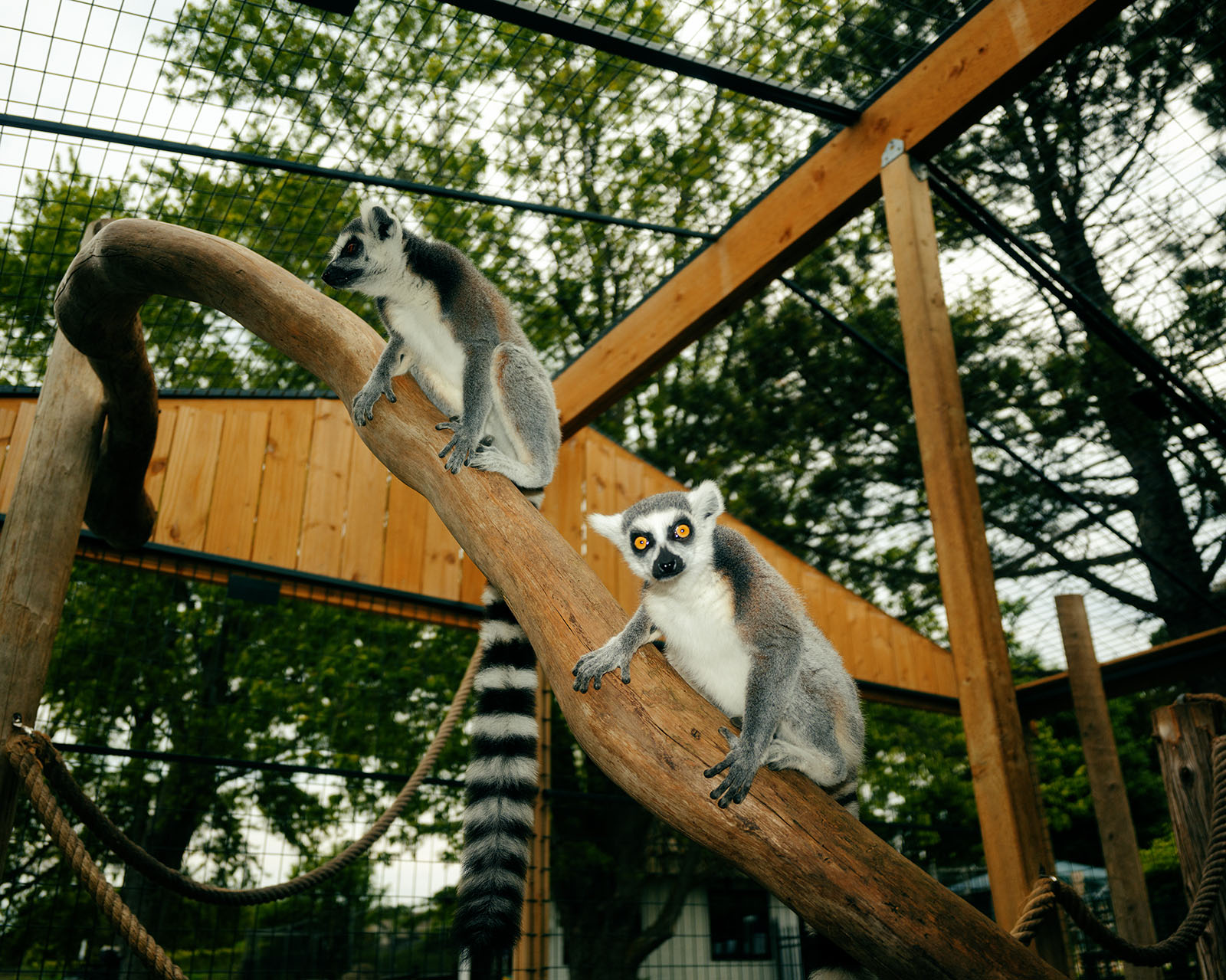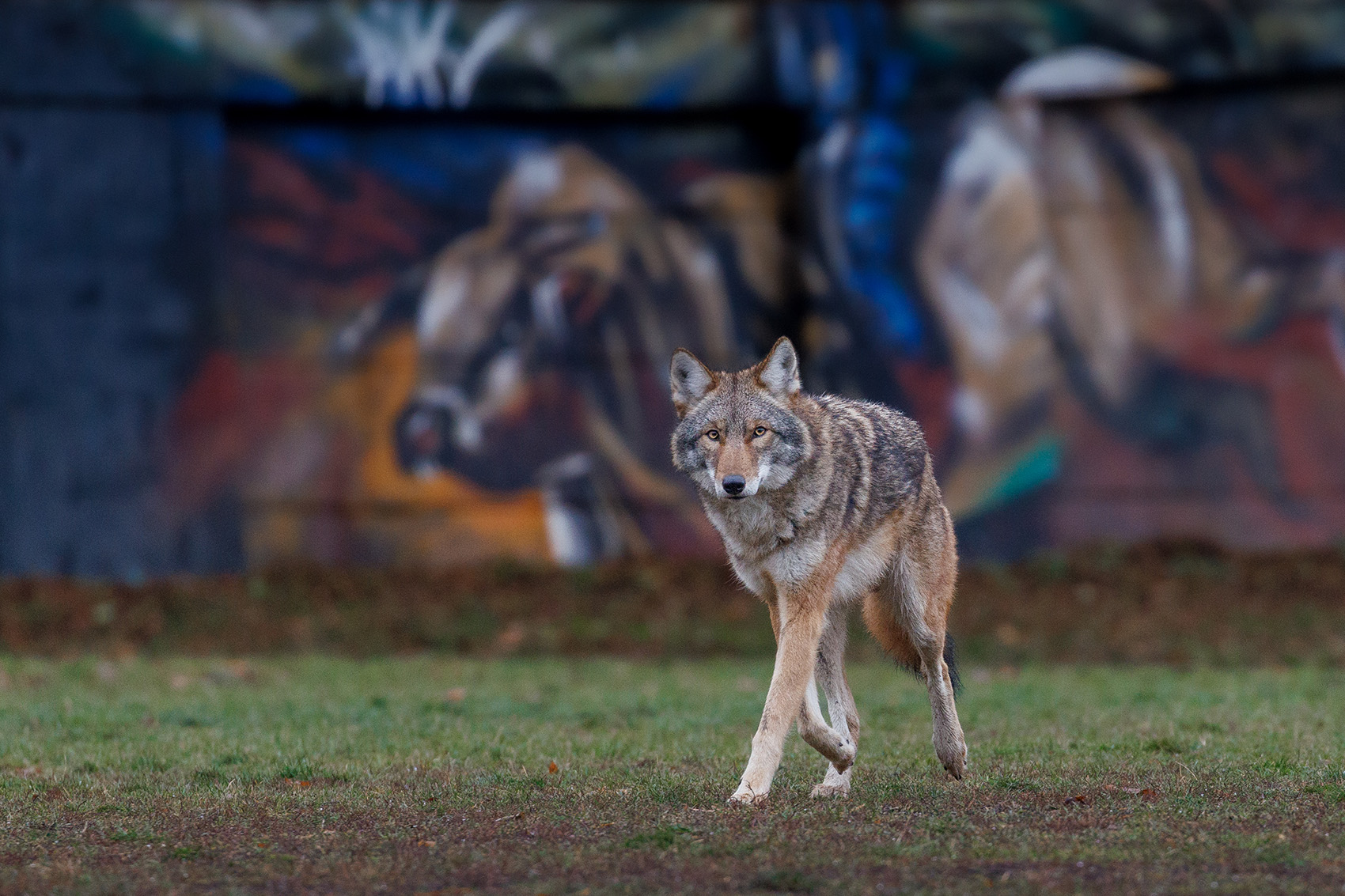
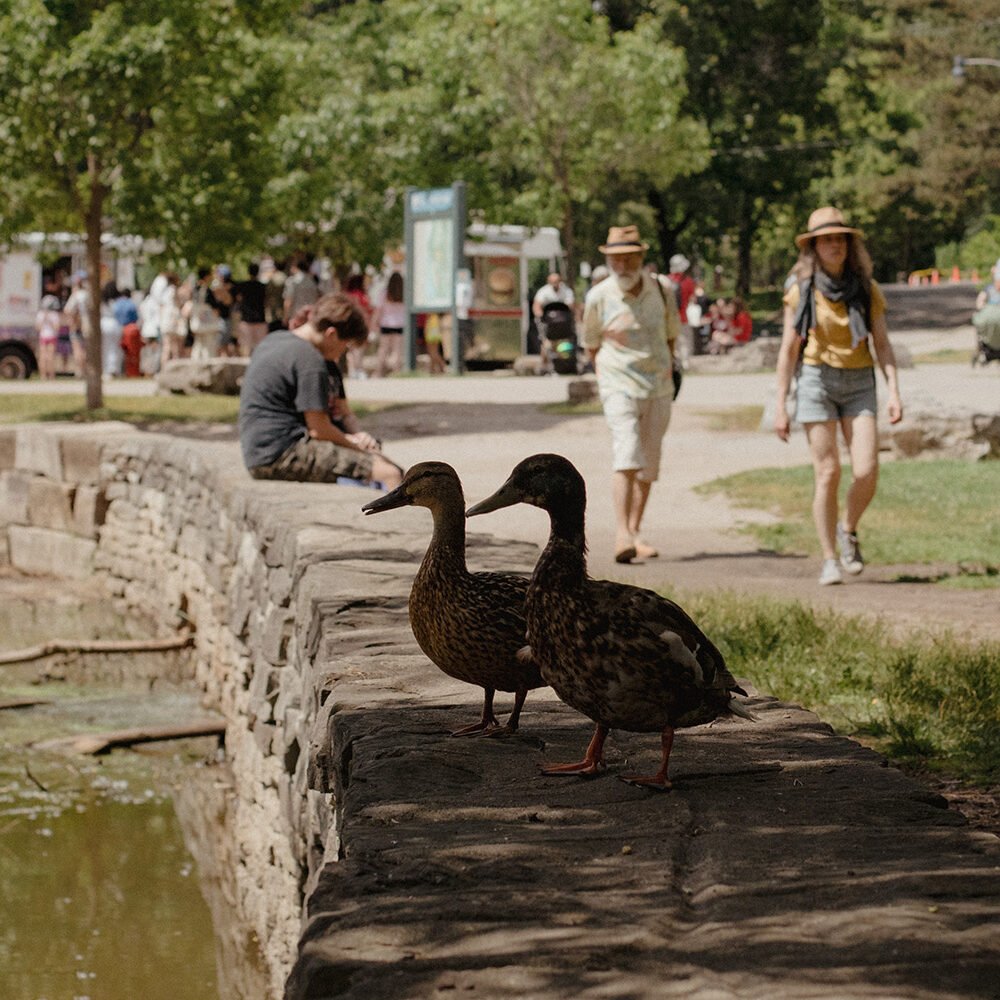
A bird suffering from avian influenza is a horrible thing to see. When the illness attacks its brain and nervous system, it may lose its coordination, flapping its wings without being able to get off the ground, flailing and stumbling about. A waterbird may swim in tight circles and repeatedly bob its head as though in nightmarish imitation of a wind-up toy. Tremors and spasms are an especially grim sight when it has lost its ability to control its neck, so that its head shakes and wobbles like a character possessed in a horror film.
In the final stages of illness, the bird can become unnaturally still, its head lolling to one side or flopped onto the ground as though its neck has collapsed. Sometimes, the only sign of life will be in its eyes, blinking, helpless.
On a bitingly cold day this January, when Jory Mullen peered out over where the mouth of the Rouge River meets Lake Ontario, she could immediately see something was wrong. Hundreds and hundreds of Canada geese were out on the ice, huddled together to keep warm against the blowing snow. Every single one had its head tucked protectively under its wing—except one.
The outlier’s head lay limp on the ice. When Mullen, an ecosystems scientist at Rouge National Urban Park, got her binoculars out for a better view, the goose looked to her to be dead, or at least seriously ill. Making sure that the ice would safely bear her weight, she carefully edged her way out toward it. Up close, she saw that the goose was blinking. But it didn’t even try to move until she had her net over top of it.
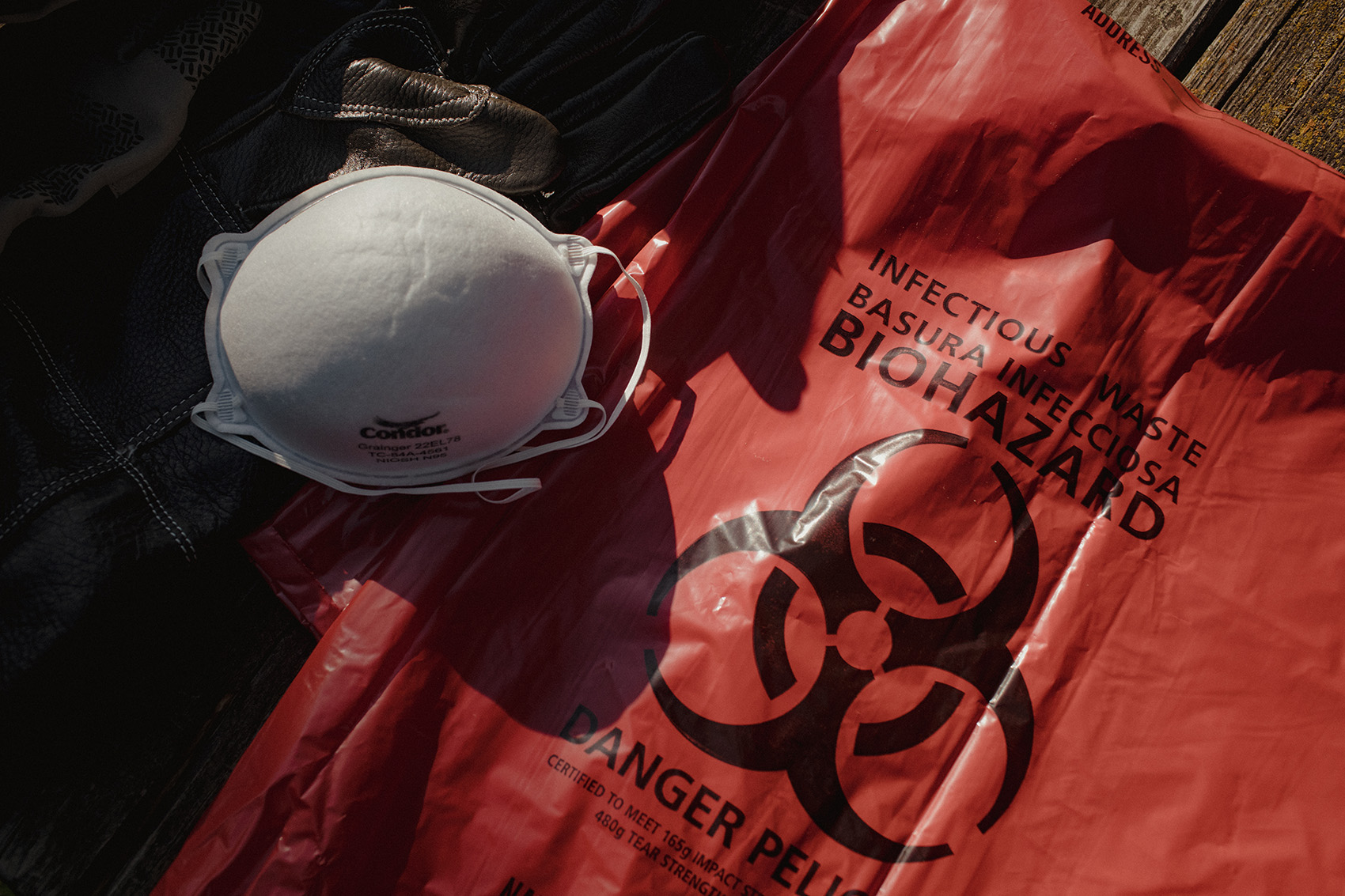
As a wildlife rehabilitator, or “rehabber” as she describes herself, Mullen is always saddened to see an animal in distress, especially one that’s not moving—a sure sign it’s in very poor condition. And in this case, she could tell that euthanasia was almost certainly this goose’s fate.
“We just wanted to secure this guy and get him out of the cold, and not let him have to suffer out there,” Mullen explained.
Avian influenza A, specifically H5N1, the virus subtype that has caused many millions of bird deaths around the world due to illness or culling, had hit Rouge Park’s wild bird population in 2023, killing 10 Canada geese that year within the park’s boundaries. After a reprieve in 2024, when the park had no reported cases, the virus was back again this past winter, bringing with it more illness, more death, and the threat of spillover into other species. Soon after Mullen retrieved the sick goose from the ice that day in January, she and her colleagues encountered several more dead or dying birds. By late March, they had tallied 23 suspected cases of avian influenza, 22 of which were Canada geese and one northern harrier, a regal, pewter and white raptor.
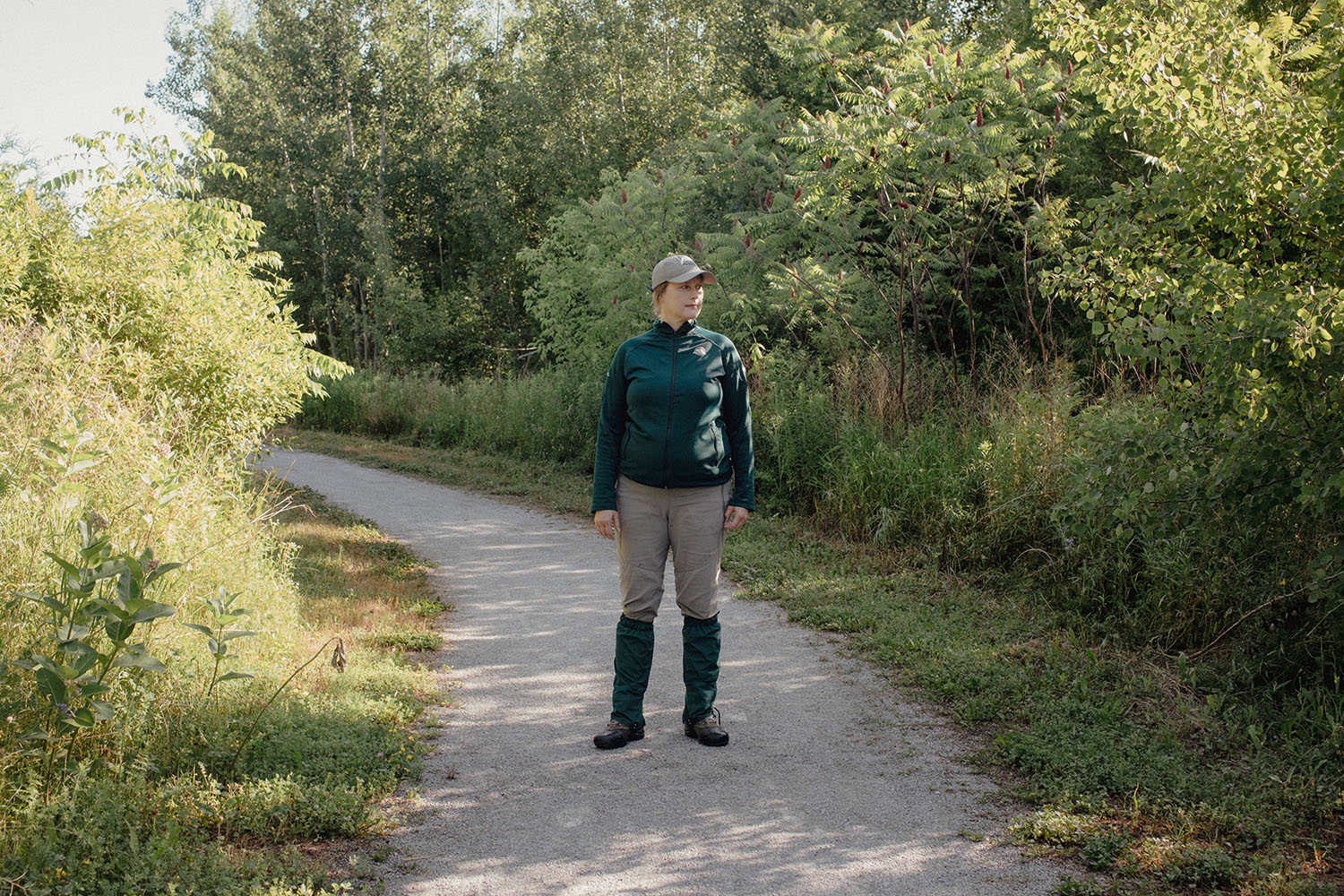
For the park’s staff, isolating the casualties—sending the sick ones to a wildlife rehabilitation centre and carefully collecting the dead ones, bagging them, and storing them in a freezer until they can be incinerated—is a priority to mitigate the spread of the virus. It’s important, of course, to prevent the park’s human visitors and their pets from coming in contact with diseased birds; in 2023, a dog in Oshawa died when it became infected after gnawing on a wild goose. But Mullen and her team also want to ensure the park’s other wild inhabitants aren’t exposed to the virus, including species that are threatened or vulnerable.
In recent years, avian influenza has had a calamitous impact on the agricultural sector, forcing farmers to cull entire flocks of poultry, infecting dairy cows in an alarming spillover into mammals, and sparking debates about the safety of consuming eggs (not an issue) and raw milk (definitely an issue, contrary to U.S. Health Secretary Robert F. Kennedy Jr.’s advice; don’t do it). Fears about the virus, meanwhile, have largely focused on its potential to become the next pandemic—a prospect so miserable in the wake of COVID-19 that many of us don’t even want to imagine it.
But overshadowed by all the public attention on avian influenza’s effect on farms and egg prices and its potential risk to human health is the question of what it’s doing to our wild neighbours, the multitude of birds and mammals that live among us. It’s a question that inevitably leads to other, larger ones: Why does it matter what the virus is doing to our wildlife? What are our responsibilities to the flocks of birds that share our skies? And what do we stand to lose if we don’t pay attention to what’s happening in the natural world?
To Torontonians like me, immersed in city life and preoccupied by entirely human interests like whether John Tory will make a political comeback or when the Eglinton Crosstown LRT will finally open, it’s not always obvious what the grim and often agonizing deaths of a few dozen birds around the GTA have to do with our daily existence. But to people like Mullen who appreciate and study these wild creatures, the connection is inescapable. If we lose certain key species, it will disrupt the balance of entire ecosystems, the biological communities in which we live—our parks, beaches, backyards. “Basically, there’s an order of things that’s so intricate,” Mullen said, “that dismantling any one part of that will collapse the whole thing like a Jenga game.”
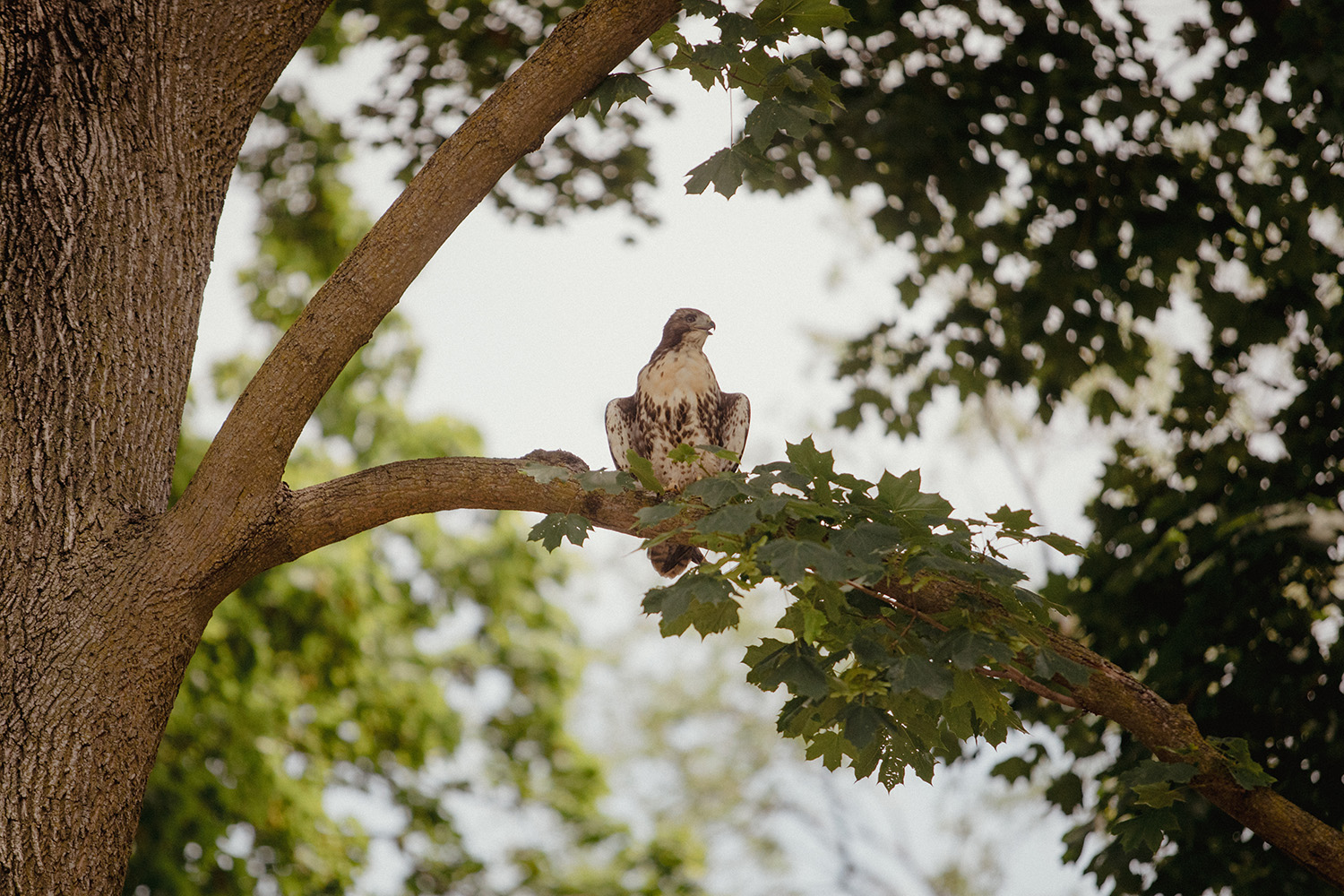
The online literature on avian influenza from the federal and provincial governments all paints a relatively reassuring picture. The overall risk to the Canadian population remains low, humans are rarely infected, most strains don’t cross easily from birds to humans, and it’s unlikely that anyone would get avian influenza from eating raw or undercooked eggs or poultry.
For us humans, in other words, avian influenza is still largely a hypothetical threat, kind of like an earthquake. Our government agencies can prepare for it, they can monitor for seismic activity or in this case, for strains of the virus that are constantly adapting and circulating. But even though it has the potential to become a devastating threat to us, it’s the kind of danger we happily ignore for the most part until disaster actually strikes—until the virus makes that critical mutation that allows it to kill people in alarming numbers, overwhelm hospitals, and hurt the economy.
For wildlife, though, avian influenza is the equivalent of the Big One. It has already spread around the globe, infecting hundreds of wild bird species and a growing number of mammals, from skunks, foxes, and pet cats to dolphins and bears. It’s caused mass die-offs—a chilling and apt term to describe the carnage of more than 17,000 dead elephant seal pups in Argentina, some 5,000 sea lions in Peru, and hundreds of dead Adelie penguins in Antarctica.
Join the thousands of Torontonians who've signed up for our free newsletter and get award-winning local journalism delivered to your inbox.
"*" indicates required fields

In far less dramatic yet still astonishing numbers, the ravages of the virus have reached our doorstep. Besides the toll at Rouge Park, 60 dead birds suspected to have had avian influenza were found at stormwater ponds in the communities around the Town of Caledon in Peel Region in January. Most of them were Canada geese, and a few were mallard ducks.
Also in January, the Toronto and Region Conservation Authority confirmed that two snowy owls, whose lifeless bodies were discovered in Tommy Thompson Park in December, had been infected with avian influenza. The magnificent, ghostly white creatures with brilliant yellow eyes spend their summers in the Arctic tundra and migrate south for the winter.
Meanwhile, along a two-kilometre stretch of Toronto’s waterfront, a Parkdale resident reportedly discovered 16 dead birds, including gulls, Canada geese, cormorants, and a hawk, on a single day this March. The local news publication TorontoToday reported at least one of those birds tested positive for H5N1.
Among wild birds, avian influenza spreads the most during the spring and fall migrations, as well as in winter, when birds cluster together for warmth. This past winter and spring, it hit Ontario’s wildlife particularly hard, according to Brian Stevens, a wildlife pathologist at the Canadian Wildlife Health Cooperative.
Stevens looks a little like Noah Wyle if the ER actor sported a buzz cut. At his facility at the University of Guelph, he’s part of a small team that handles dead wild animals suspected of having avian influenza from across the entire province. These bodies are sent to them by animal control agencies, wildlife rehabilitation centres, municipalities, and members of the general public. They often arrive in coolers that the team ships to whomever reports the carcasses through the wildlife cooperative’s email or toll-free number.
Stevens noticed numerous outbreaks across southern Ontario this past winter, as the extreme cold caused lakes and ponds to freeze over, which, combined with heavy snow, forced birds to cluster in tight groups. Viruses, in general, also typically survive better in the cold.
When Stevens and his colleagues receive a bird carcass, they swab the bird’s trachea, or the back of its throat, and the cloacal slit, its single multi-purpose rear orifice. Then they hand over the samples to the provincial Animal Health Laboratory at the university, which tests whether the animal has an avian influenza type A virus and whether that virus is an H5 or an H7, currently the subtypes of greatest concern.
Not all avian influenza viruses are deadly, and not all birds are equally susceptible to them. For reasons not fully understood, Stevens tends to receive a disproportionate number of dead Canada geese and crows that test positive, and the odd bird of prey, like red-tailed hawks. Other birds, like songbirds, are largely unaffected.
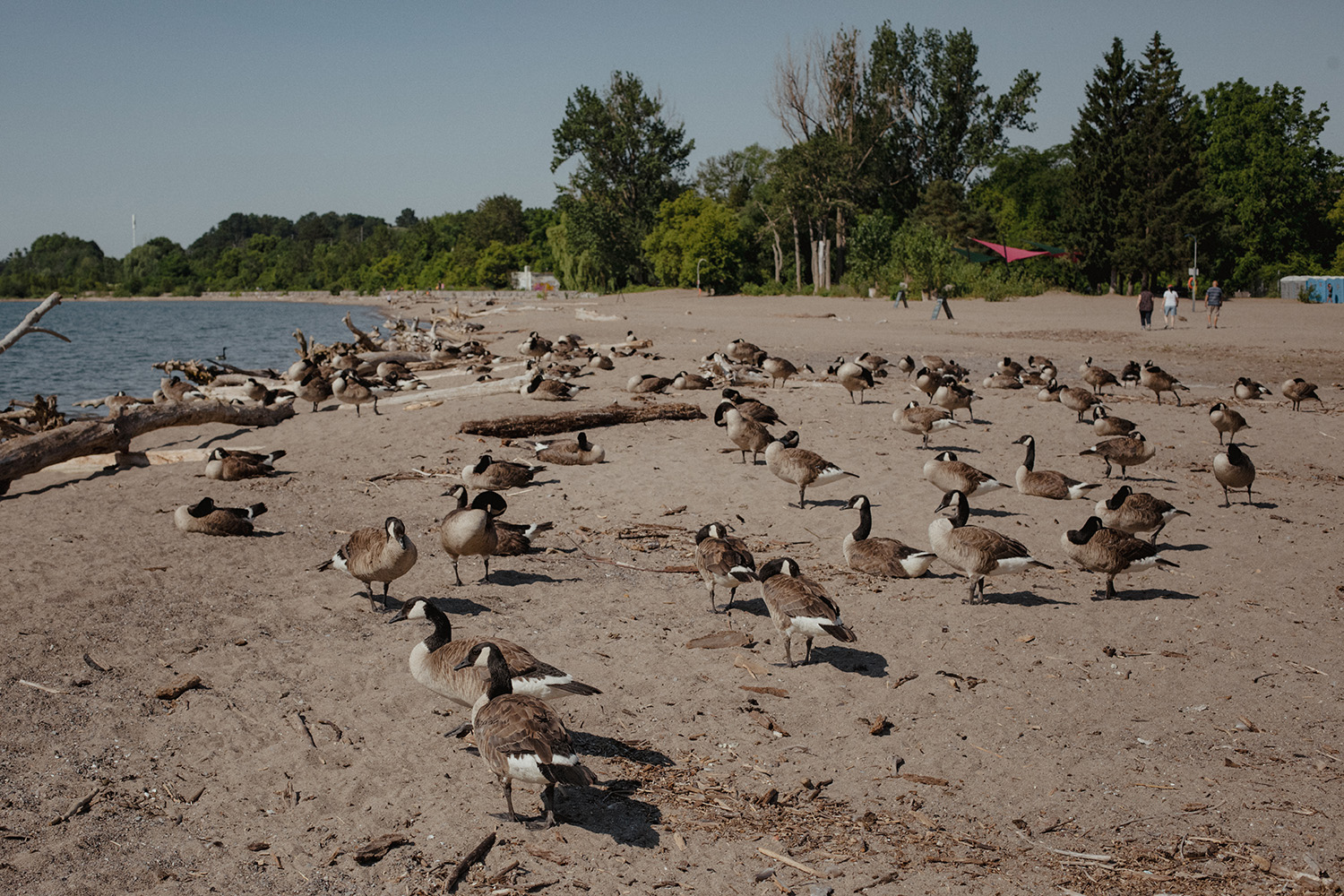
Samples of confirmed cases are then sent for further testing at the national laboratory in Winnipeg, where they can determine whether the virus is a highly pathogenic avian influenza, or HPAI. This distinction is of extreme importance for farmers and agencies like the Canadian Food Inspection Agency (CFIA), but it also reflects our society’s tendency to overlook wildlife. That’s because the term “highly pathogenic” doesn’t refer to the virus’s ability to kill wild animals. It only refers to its ability to kill poultry.
The speed at which the national laboratory produces results on wild animal samples also speaks to where wildlife stand in our human-centric hierarchy of importance.
“It can take months for them to get that information back to us, because our samples are not the priority for them,” Stevens said, explaining that chickens, turkeys, and other poultry come first. These commodity animals are, after all, tied to people’s livelihoods and have economic value. Which means for Stevens and his team, it takes “a bit more time to get our wildlife results.”
So far this year, the Canadian Wildlife Health Cooperative’s records show nearly 40 percent of the 458 dead wild birds tested in Ontario were positive for H5. That’s a marked increase from the 13 percent of the 769 wild bird cadavers tested last year.
The data they collect on all highly pathogenic avian influenza cases wind up on the CFIA’s online dashboard, with each wild animal represented as a red dot on a map of Canada.
If you zoom in on Ontario, the dashboard’s database reads like a list of war casualties: Canada goose, dead, H5N1. Mink, dead, H5N1. Bald eagle, dead, H5N1. Great horned owl, dead, H5N1. Red-breasted merganser, dead, H5N1. Striped skunk, dead, H5N1.
This is only the tip of the iceberg. In the event of multiple deaths like at Rouge Park or in Caledon, Stevens and his team will often only accept one or two carcasses for testing. The process is too expensive and resource-intensive to sample, test, and collect data on every wild animal. Plus, once a positive case is confirmed, it’s reasonable to assume the other dead or sick animals found in the same location are also infected anyway.
There’s also the tricky matter of whether anyone even notices a dead or sick animal in the first place.
“We are seeing the ones that we’re seeing,” said Mullen, who conducts sweeps of Rouge Park with her colleagues, looking for diseased animals. “But what about all the other areas where they’re dying and you can’t see them or we haven’t found them, and they haven’t been reported to us?”
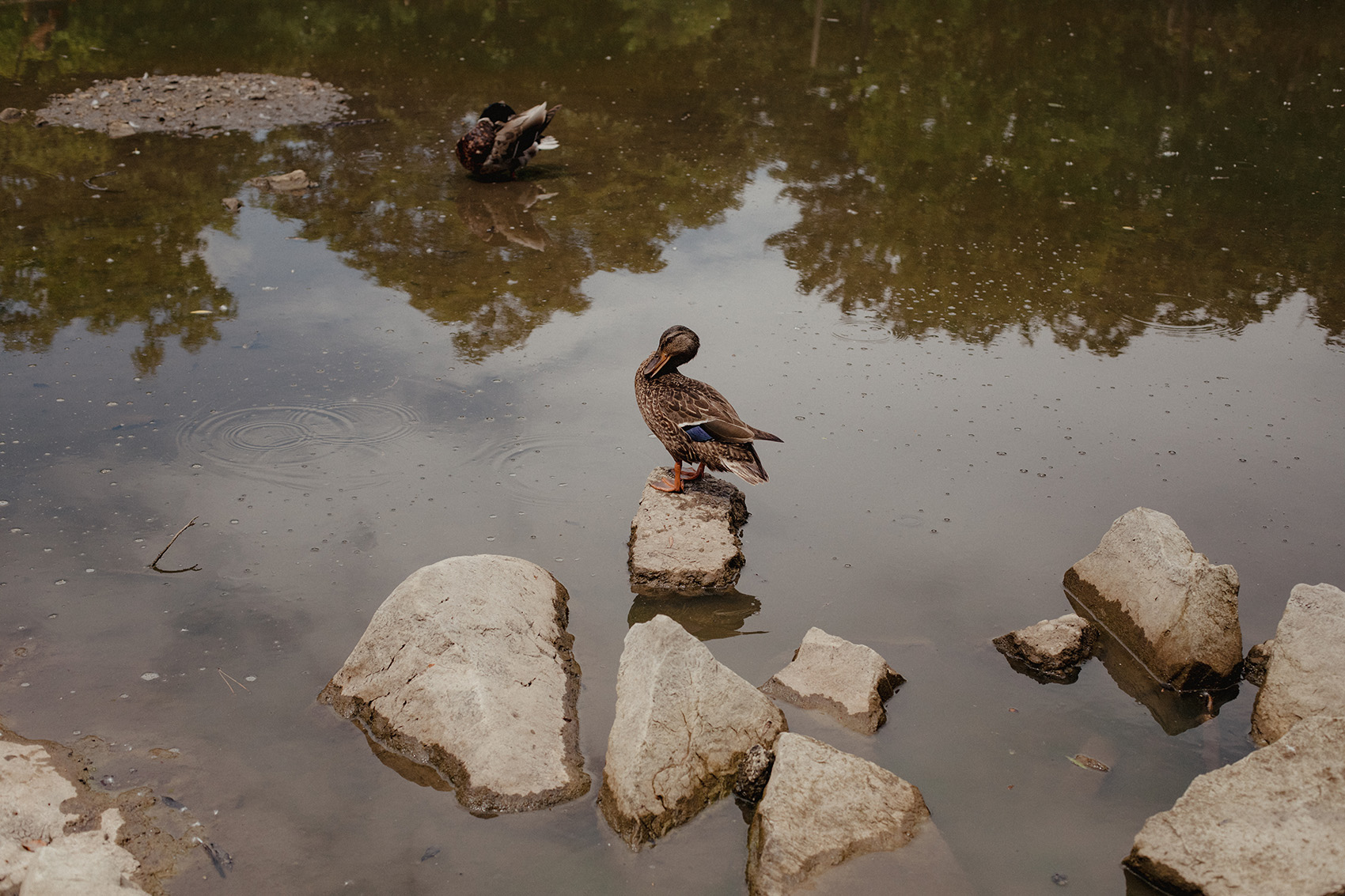
Like human flu viruses, avian influenza viruses have been around for ages and are constantly adapting and recombining. (Early records of the term “fowl plague” date back to 1878.) But avian influenza seized the world’s attention in 1996, when H5N1 was identified in domestic geese in the southern Chinese province of Guangdong.
The following year, H5N1 caused outbreaks in other parts of China and Hong Kong, prompting widespread culling of farm birds. It also infected 18 humans, six of whom died.
Between 2003 and 2015, the virus went on to infect more than 800 humans, mainly in Egypt, Vietnam, and Indonesia. Alarmingly, among these individuals, the death rate was greater than 50 percent.
For the next several years, the virus seemed to retreat, sparking only sporadic outbreaks across Asia, Africa, the Middle East, and Europe.
But in 2021, having mutated, H5N1 re-emerged as the predominant subtype, and made its way to North America.
According to Shayan Sharif, a professor of immunology at the University of Guelph who studies avian influenza, it’s unknown why H5N1 resurfaced, now a mutated relative of the ancestral virus from 1996. It’s thought that certain migratory birds and waterfowl are reservoirs of the virus, able to harbour it without dying or showing symptoms, and so the virus can survive in their populations for extended periods of time. The mutation of the virus and its leap from species to species could have been either just some random event, or possibly the right environmental conditions, Sharif said, like human encroachment into wild habitats, causing animals to be exposed to new species and allowing viruses to mix with new ones. Or it’s possible that climate change played a role, causing some bird species to stay in one area longer than usual before migrating, while causing others to arrive earlier than usual. “And then you have, you know, this accidental exposure of the two species that historically, evolutionarily, they would never have seen each other,” Sharif explained.
Whatever caused the virus to come out of seclusion, H5N1 made its way to North America from Europe, across the Atlantic, likely via Iceland or Greenland. In 2021, the first reported cases on this continent in years were among chickens at a farm in St. John’s, Newfoundland, which were eventually linked to a great black-backed gull at a nearby pond that had been found ill and died a couple weeks earlier. And it’s on this side of the Atlantic that, in a development that grabbed headlines and dialled up worries about the virus’s risk of starting a pandemic, H5N1 made the terrifying leap into dairy cows in the U.S. in 2024, and infected at least one pig in Oregon that October.
How avian influenza spreads from one part of the world to another is a humbling lesson in the patterns of nature that occur beyond human control, and often beyond our notice. It’s carried by migrating birds, who fly—not east to west across the continent as we do, but following north-south migration patterns. This means policies like the U.S. health secretary’s widely condemned proposal to let avian influenza rip through American poultry farms instead of culling infected flocks could have serious consequences for wild birds that migrate here.
Once H5N1 arrived in Canada, it soon began spreading down the Atlantic flyway, one of four avian flight paths that run vertically through North America. The first case of the virus turned up in New York state during the winter of 2021 in a sanderling, a small shorebird with black legs and a black bill.
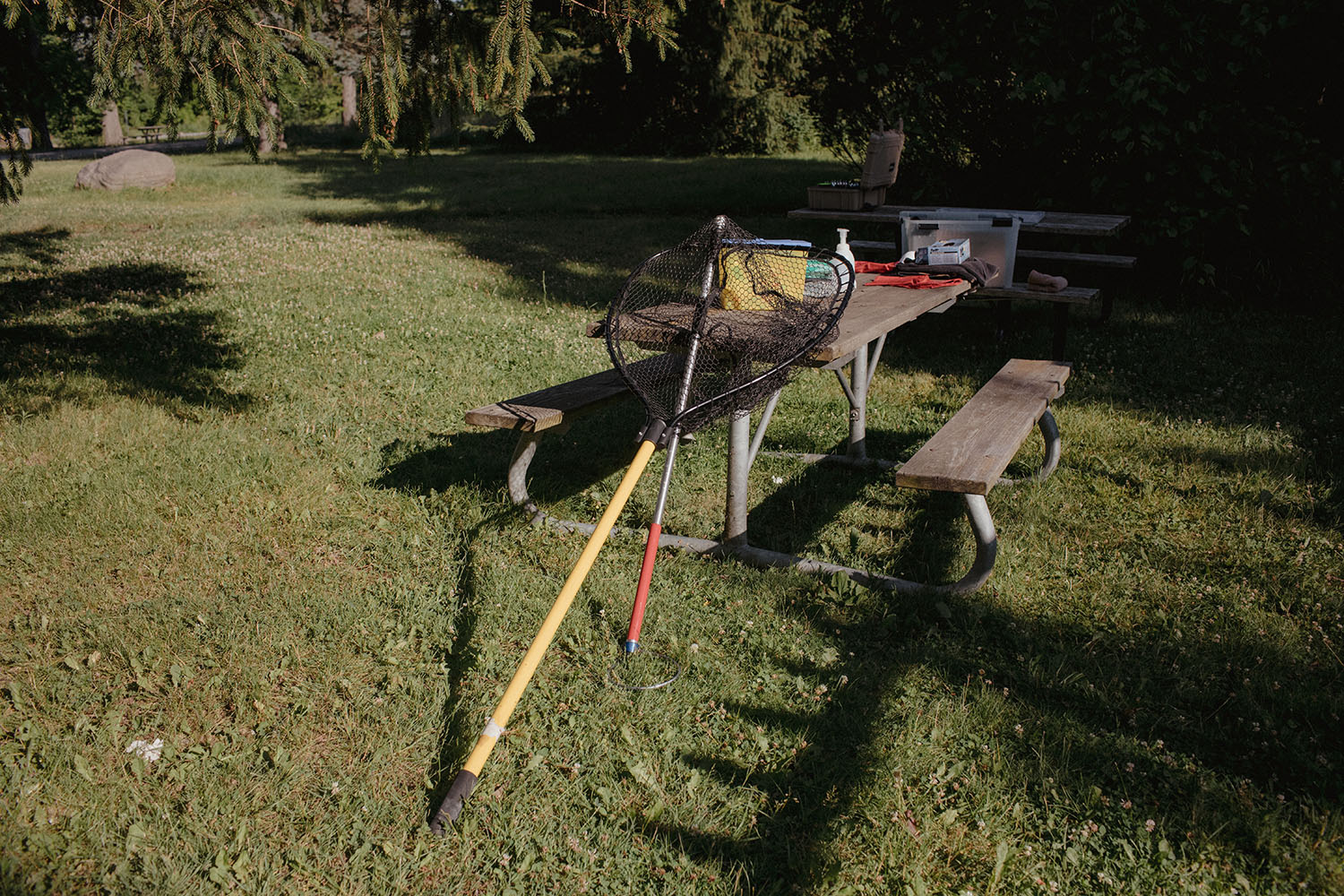
“We started finding lots more after that,” said Krysten Schuler, a wildlife disease ecologist and director of the Cornell Wildlife Health Lab in Ithaca, NY. There were infected raptors, owls, hawks, eagles, ducks, geese, and other types of shorebirds, as well as mammals like fox kits. The range of species that were infected was something unique to this particular virus, she said.
But when Schuler tried to learn more about the virus and how it was killing these animals, she came up against a hurdle. There are restrictions on researching the virus, owing to its potential for unleashing disaster. Much of the science can only be done, for instance, at facilities designed to handle and contain such biohazards. So after swabbing them, and receiving preliminary positive test results, Schuler was required to stop working on the animals and destroy their bodies.
Ironically, since the virus has made its leap into U.S. dairy cows, which authorities there have deemed unnecessary to cull, the restrictions on handling the virus have loosened somewhat. That means scientists like Schuler have been able to obtain approval to research things like how the virus gets into the brains of raptors, causing encephalitis or swelling, and they’ve learned that the same strain detected in cows is now dominant in wildlife, indicating the virus has spilled back into wild birds.
Still, Schuler has a long list of big, unanswered questions.
“I want to know why this virus is killing some birds and not others, and how it’s changing over time,” she said. “What will it do to populations over the long-term?…There’s just all sorts of basic science questions.”
When I asked Schuler what worries her most about avian influenza, her response surprised me. It had less to do with the virus itself than with how humans react to it. She told me she worries that people are vilifying wild animals, perceiving them as the carriers of a plague that will bring widespread death and destruction. She saw this happen with COVID. When it was discovered that SARS-CoV-2 had spilled over into white-tailed deer, it sparked widespread worry that the virus would recombine in deer and spill back into humans.
To Schuler, that prospect was besides the point.
“The odds are you’re going to get it from a person before you get it from a deer,” she said, dryly. “We kind of automatically jump to make wildlife the bad guy, when you know, …they’re actually the victim. Like they’re the ones dying en masse, and people are more worried about themselves and the potential that they may be threatened than the actuality of the wildlife that are dying.”
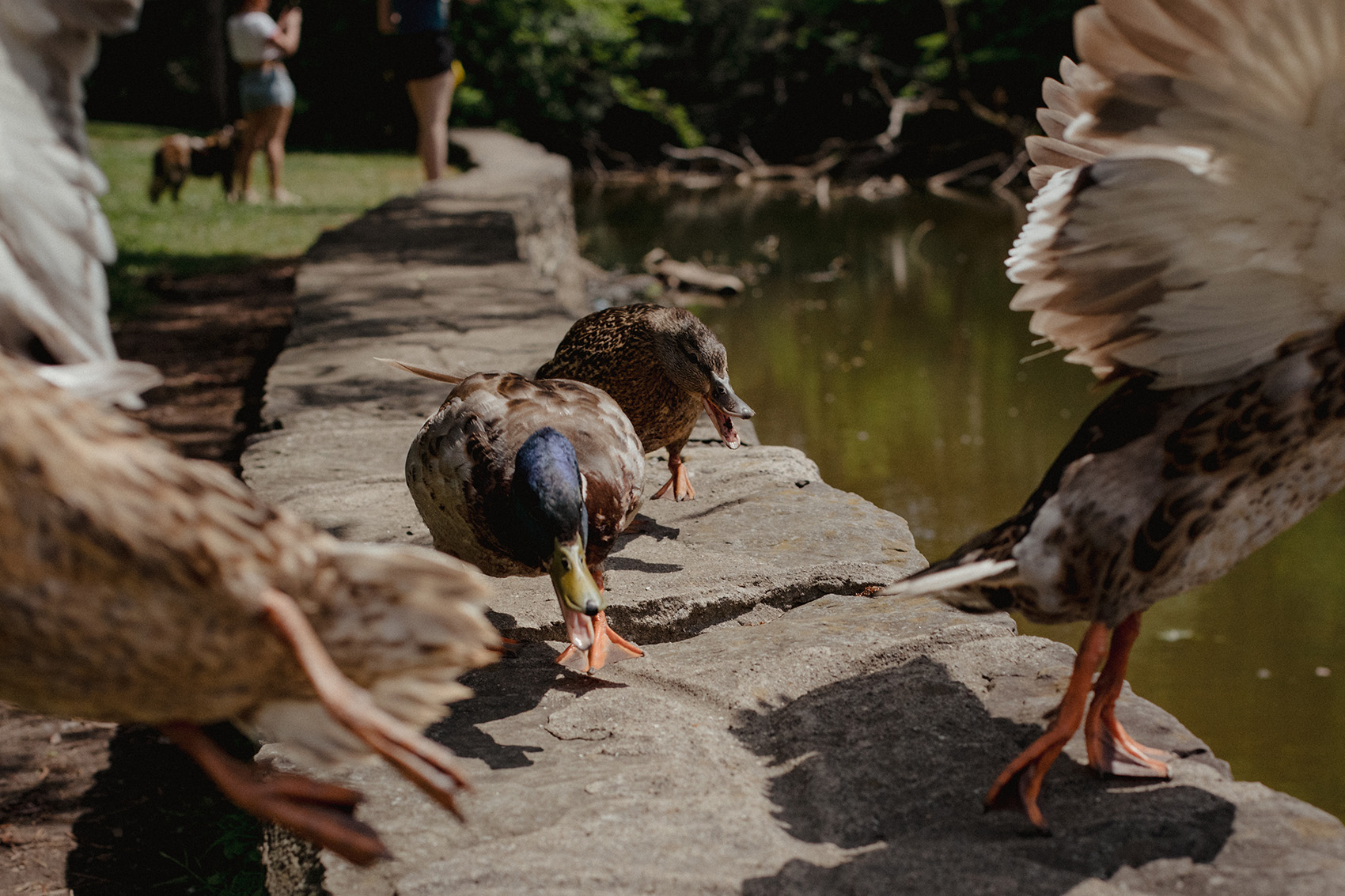
For David Bird, an emeritus professor of wildlife biology at McGill University, the threat that avian influenza poses to humans is no small matter.
“I don’t know if this is alarmist or not, but we’re probably about one mutation away from this virus being transmitted from human to human,” he told me.
When I spoke with him by phone in March, the U.S. had reported its first human death from H5N1 a little more than three months earlier, and this past winter, an infected B.C. teen was hospitalized for weeks.
But Bird (yes, that’s his real name) also shared with me his concerns about the birds he loves, particularly peregrine falcons and gyrfalcons, whose populations are plummeting in certain parts of the world, including in Alaska and Iceland. The reasons for their stark declines have yet to be determined, but like many other scientists, Bird suspected avian influenza is a driving factor.
Peregrine falcons are among several species naturally found in Ontario that have been pushed to the brink before. Like bald eagles, ospreys, and several other birds of prey around the world, their populations dwindled between the 1940s and ‘60s due to the widespread use of the synthetic pesticide DDT.
The chemical compound interfered with their hormones and caused them to lay eggs with thin eggshells. But even after scientists discovered DDT was causing the birds’ decline, “it was the fact that it had potential impacts on humans that got the government’s attention,” said Bird, who was involved in efforts to protect the birds from extinction.
By the mid-1970s, most uses of DDT were phased out in Canada, and since then, peregrine and bald eagle populations have bounced back in Ontario. Last spring, bald eagles were seen nesting in Toronto for the first time in documented history. But lately, Bird had been hearing from his network of wildlife biologists in other parts of the world about empty aeries and an unsettling absence of adult peregrines—only juveniles not capable of breeding. And their descriptions have given him a sinking feeling of déjà vu.
Only this time, “we’re not combating a chemical that we can regulate,” he said.
Our ecosystems are so fragile, both in Canada and across the globe, that we can’t afford to lose any more vulnerable animals, be they bald eagles or elephant seals, said Sharif, the immunology professor from Guelph.
The devastation of some of their populations, like the estimated deaths of more than 95 percent of elephant seal pups in an area of Argentina from avian influenza, could have unpredictable and long-term consequences.
“This is actually a recipe for disaster,” Sharif said, because mass die-offs also hamper the resistance of the progeny of remaining survivors to other diseases, in what’s known as a “genetic bottleneck.” Inbreeding and a loss of heterogeneity in a species’s gene pool leave their populations more susceptible to new viruses, he explained. That means even if they don’t meet their demise with H5N1, the virus may make them more vulnerable to future illnesses.
On a sunny afternoon in June, I met Nancy Barrett and her husband Adam Solomon behind their apartment building in North York. I had reached out to Barrett because I figured if anyone could help me better appreciate wildlife, it would be her.
Barrett is the director-at-large of the Toronto Ornithological Club and has been a birder for 40 years. “I’m a little obsessed,” she said.
When she smiles, her toothy grin lights up her whole face, and her enthusiasm is as infectious as her laugh, a distinctive, shot-gun “heh, heh, heh.”
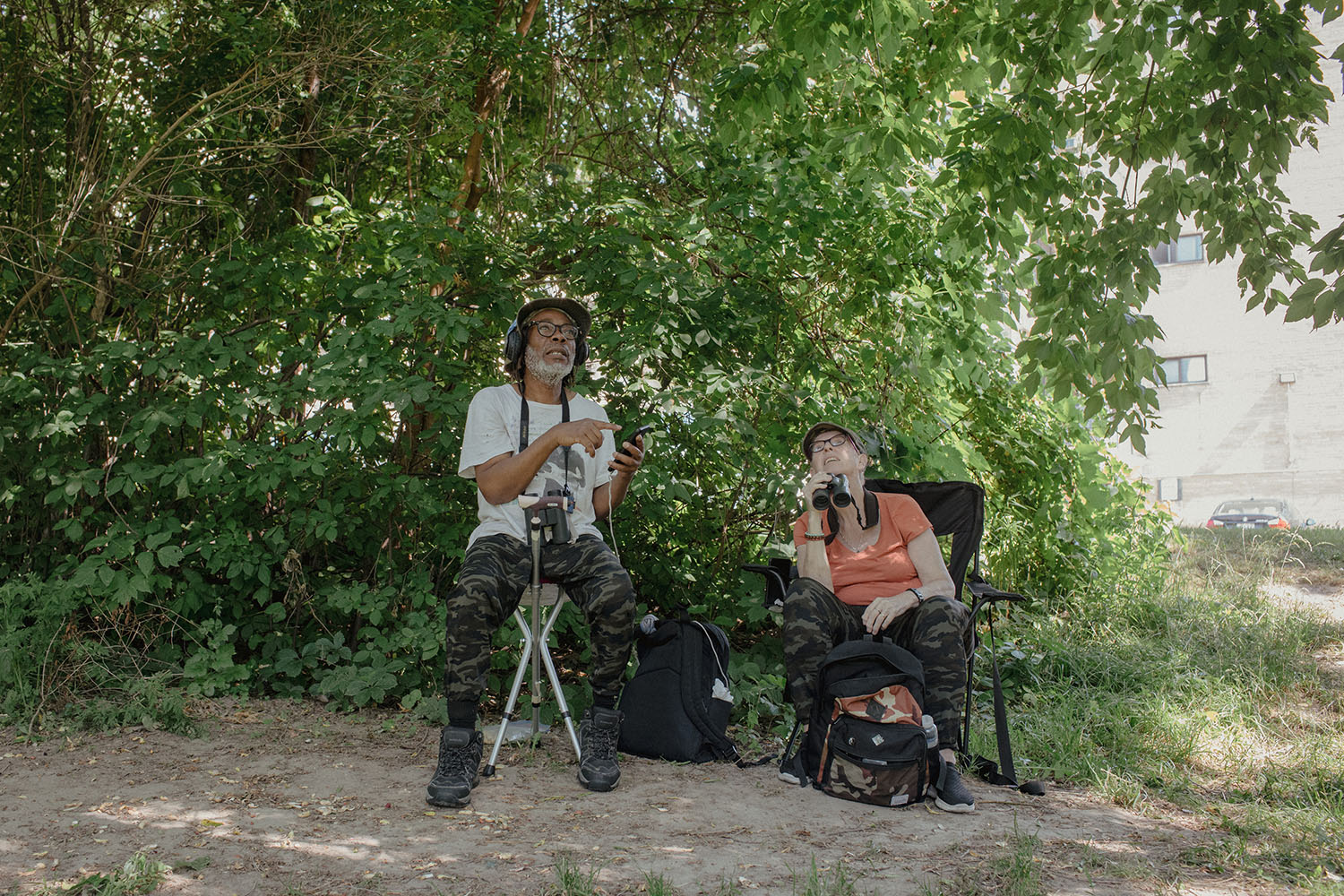
Both decked out in camouflage, she and Solomon led me to the ravine behind their building, which leads to Black Creek. Almost immediately after setting up foldable seats, they began pointing out the sound of a yellow warbler twittering, a red-winged blackbird sweeping across the sky, and a flash of orange in the tree above us where an oriole was going about its business. The ravine was teeming with life.
“Come! Come! Come!” Solomon beckoned me. He pointed to a branch. “There! There! There!”
“He’s a stunning bird,” Barrett said, as we peered up at the oriole. “Stunning.”
What was it about birding that interested her so much, I wanted to know. And why was she so eager to encourage others to share her fascination?
“Because it gave me so much,” she said, without a missing beat. “It’s given me so much. More than I can ever be grateful for.”
Being around birds has opened up her world, she elaborated. “It’s given me purpose. It’s given me a reason to appreciate what we have here.”
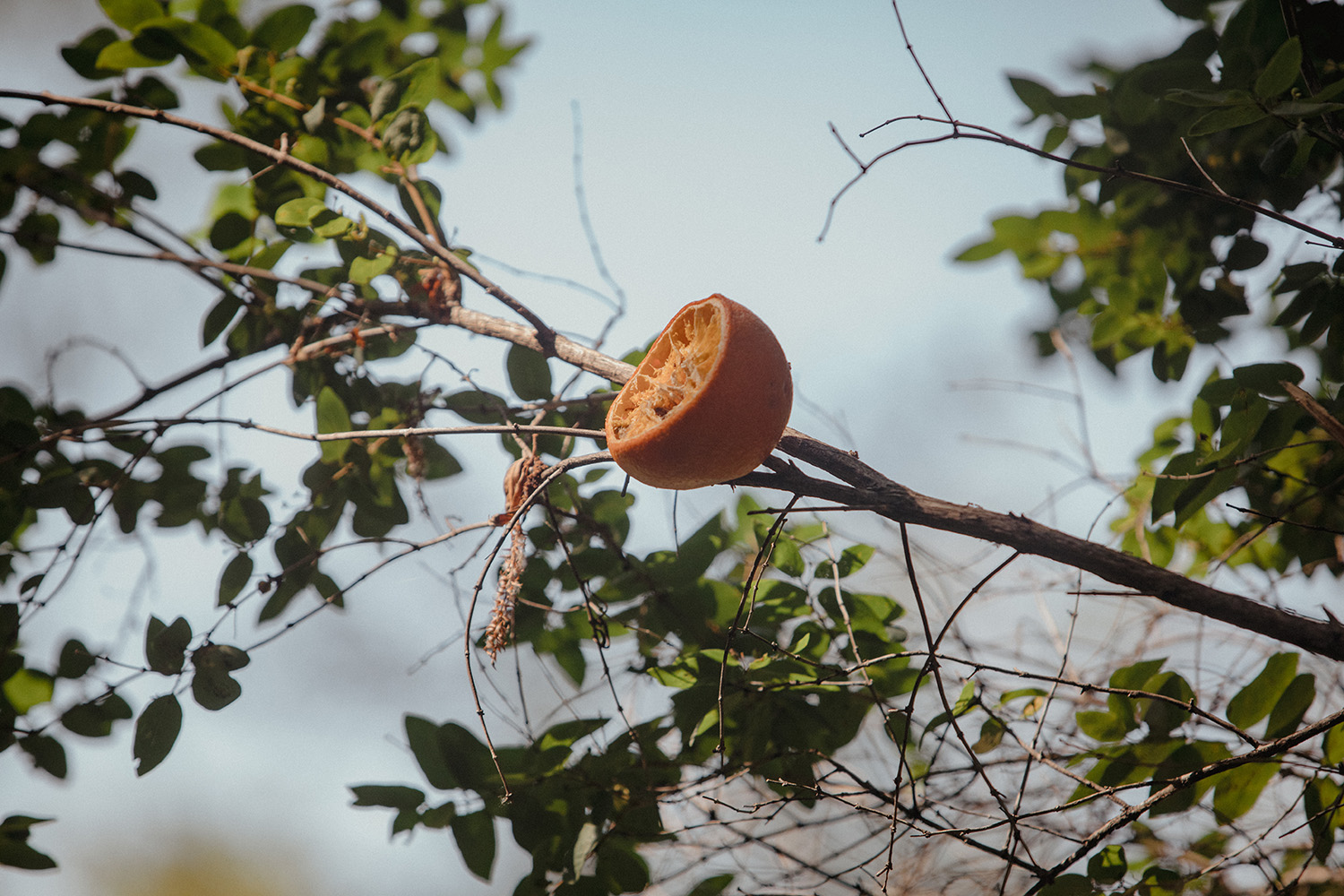
She nodded at Solomon. “That’s one thing that bugs him,” she said. “We can be in a place and there’ll be birds all around us, and there’s people who are maybe going to work or something like that and they’re just trudging along. They don’t see anything, you know what I mean? We want them to open their eyes.”
None of the birds we encountered that day were geese, raptors, or crows—the type most likely to wind up as carcasses at Brian Stevens’s facility in Guelph. But if we’re going to help the animals hardest hit by avian influenza, it will, as Barrett put it, take opening our eyes to them.
Of course, it’s unrealistic to expect humans to actually save wildlife from the virus. In California, there have been efforts to vaccinate California condors to protect them from avian influenza, since they’re a species on the very cusp of extinction. But no one in Ontario is going to go around chasing Canada geese or red-tailed hawks or bald eagles to inoculate them.
Nevertheless, there are things humans can do—and arguably, are obliged to do—to give our wild neighbours the best possible chance of weathering this disaster. We owe it to them. As Jory Mullen at Rouge Park pointed out, H5N1 came from the human world, from poultry farms, and our animal farming practices have contributed to it becoming the threat it is today.
“There is an anthropogenic reason that our now native wild birds [and mammals] are suffering and dying,” she said.
Measures like mitigating climate change, curbing pollution, and protecting natural habitats would give wild populations at least a fighting chance against this raging virus. Switching away from lead ammunition for game hunting, and avoiding the use of rodenticides, both of which poison birds of prey, would help. We can also be on the lookout for dead or symptomatic animals—to recognize the terrible signs of avian influenza and make sure infected wildlife can be safely removed from the environment.
To do any of that, though, requires us to see our wild neighbours the way Mullen, or Bird, or Barrett and Solomon, do. It requires noticing them, appreciating them, and understanding their value. It requires acknowledging there’s a whole, wild world right in front of us that we’re a part of, if we allow ourselves to see it.
In Black Creek that afternoon, a woodpecker called from somewhere hidden in the trees. After a while, Solomon spoke up. He pointed out the bushes, the trees, the water, and the tall grass in the ravine, all of which provide food and places for birds to nest and are intertwined. Disruptions to the environment, like cutting down the grass too early in the spring, could destroy their eggs and eliminate the grasshoppers their diet depends on. “Once you kill this,” he said, gesturing to everything, “then the birds won’t survive.”
As the day stretched on, it came time for me to leave, but I found myself wanting to linger there longer in the sun-dappled ravine with Barrett and Solomon, with the orioles, red-winged blackbirds, eastern phoebes, and northern flickers. Even though we were less than 200 metres from the traffic and the buses and construction around Keele Street, the city with all its human activity seemed to have melted away.
Within our short time together, the chance to watch, listen, and learn about the birds had given me a small glimpse into a new dimension for experiencing the world—and a humbling reminder of our place in it.
